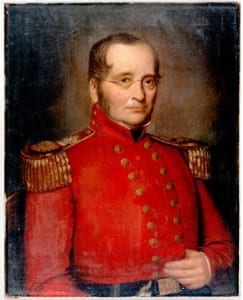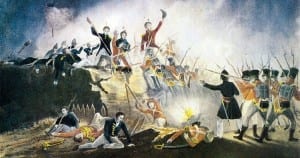December 2013 Friends of Fort York newsletter available here in 12-pt Times New Roman
I enjoyed reading the December 2013 issue of The Fife and Drum – The Newsletter of The Friends of Fort York and Garrison Commons.
You can access the PDF version of the document here:
I found it a challenge to read the printout of the original PDF file, as the print is small.
That being the case, I’ve prepared a PDF version of the newsletter in 12-pt Times New Roman set at a spacing of 1.4 lines, which is easier for me to read. You can access the 12-pt version of the document here:
The Fife and Drum Dec 2013 reformatted
Contents
The Fife and Drum – The Newsletter of The Friends of Fort York and Garrison Commons
v. 17, No. 4, Dec. 2013
- Fort York and the Origins of Canada’s Permanent Army
- Cholera Epidemics in York in 1832 and 1834
- Bicentennial Timeline: Jan. to Mar. 1814
- The Friends’ Accomplishments in 2013
- In Review, All Their Glory Past
- Farewell to George Waters
- From the Gallery
- Administrator’s Report
- New Cookbook: Setting a Fine Table
- Upcoming Events
Images
I’ve included (below) some of the images, with accompanying captions, from the December 2013 Friends of Fort York newsletter.

Dr. John Shortt was the medical officer for the 79th Regiment of Foot (Cameron Highlanders) stationed at Fort York in 1832. Thanks largely to his precautions to isolate the garrison, enforce hygienic measures, and care promptly for those who contracted cholera, very few died from it. Credit: City of Toronto, Museum Services, 1971.42.160
I enjoy reading the newsletter because I enjoy the presence of Fort York as part of the Toronto cityscape, nestled as it is within surrounding condo towers, and visible from the QEW through the clues provided by treetops and the presence of a flag.
Much history is associated with the site. In the years after the end of the Second World War, which was the era in which the mouth of Etobicoke in Long Branch (Toronto not New Jersey) was channelized, and Colonel Samuel Smith’s 1797 log cabin, also in Long Branch, was bulldozed, traffic engineers sought to move Fort York to a location south of its original site. Instead, however, in response to public resistance, the route of the QEW was diverted and the fort remained where it was. Its enduring presence is a significant achievement, which warrants celebration.
The fort connotes and denotes different things to different people. In my case, having lived in Toronto since 1975, Fort York reminds me of the Toronto of the 1960s. In the early 1960s I was living in Montreal, and at that time built up an image of Toronto in my mind. Fort York represents for me what Toronto was at the time I first encountered the city. Among other things, Toronto of the 1960s is predominantly British, and it has a certain texture. It’s an alien culture, but one that I can relate to, as I grew up in a 1950s anglophone community in Montreal, where the British presence was equally as strong – and for an immigrant child, equally strange yet familiar. As a child, a person can get used to quite a few things.

Among the book’s illustrations is a painting, “Repulsion of the British at Fort Erie, 15th August 1814,” by E.C. Watmough. Credit: Chicago History Museum, The Bridgeman Art Library
During my early 1950s primary school years in Montreal, student report cards were sponsored by the Bank of Montreal. On the report was printed an illustration featuring some aspect of family life – I recall the image of a young child running to greet a family member, maybe a grandfather. The logo for the bank was prominently displayed. The illustration is among the images from childhood that has stayed in mind for me.
My other life was as a child of the Estonian community, whose history is highlighted in Volume 1 and Volume 2 of The Estonians in Canada. I recall my attendance at an Estonian summer camp in New Glasgow, Quebec in the early 1950s, and spending a summer as well at a rented house in a rustic setting near St. Lin, Quebec, the town where Wilfred Laurier spent his early years. In the late 1950s, I also became acquainted with Lost River, Quebec, where some of the original settlers were anglophone, including immigrants from Scotland.
Friends of Fort York welcomes new members and donations
Click here to make a donation to assist The Friends of Fort York and Garrison Common in their work.
Archaeology of Old Fort Erie
The newsletter includes a review of a recent book by Donald Graves. The review mentions an archaeological dig near Old Fort Erie, in Ontario’s Niagara Peninsula.
As Ron Williamson has explained, the archaeological survey of a U.S. military graveyard from the War of 1812, located just west of Old Fort Erie, suggests that the hard physical work involved in the building of defensive works, or engagement in long marches carrying heavy packs, would likely account for the fatigue fractures found in some of the skeletal remains uncovered at the site.
A review of Graves’ earlier study, about the Battle of Lundy’s Lane, can be accessed here.
Update
Additional photos of interest related to Fort York, from the urbantoronto.ca website and blogTO.com websites, respectively, can be found here and here.
As well, a recent post about the Canadian Military can be found here.

Leave a Reply
Want to join the discussion?Feel free to contribute!